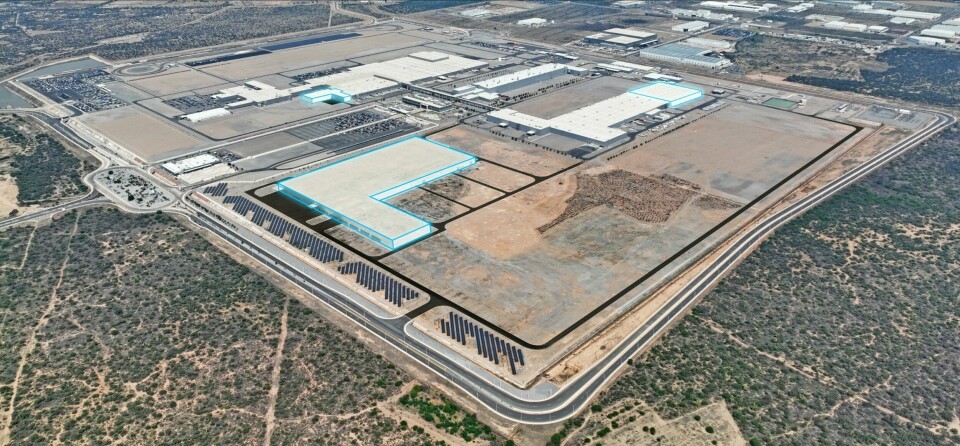BMW builds gigafactory for Neue Klasse in Mexico
BMW Group is taking its ‘local for local’ approach to manufacturing and supply chain to Mexico, and has started construction on an 80,000 sq.m battery manufacturing facility next to its assembly plant in San Luis Potosi. The plant is due to start making the Neue Klasse electric sports activity vehicle there from 2027.

The battery facility will account for $540m of an overall investment at the plant of $855m. BMW is also adding 10,000 sq.m to the assembly and logistics areas at the San Luis Potosi plant, as well as 20,000 sq.m to the body shop, taking it to 90,000 sq.m in total.
BMW is bringing the Mexican plant in line with its international location of high-voltage battery plants as close to vehicle assembly as possible. Construction on battery facilities is also underway at Debrecen (Hungary), Shenyang (China), Woodruff, near Spartanburg (USA) and Irlbach-Straßkirchen (Germany).
The carmaker said such an approach safeguards production, even in the event of unforeseen political and economic developments, such as the automotive industry has seen in abundance in the last few years.
BMW said the Neue Klasse will use new, round lithium-ion battery cells developed specifically for what will then be the sixth generation of BMW eDrive technology. The new battery format will increase energy density by more than 20%.
These new cylindrical cells were developed at BMW’s €170m Cell Manufacturing Competence Centre (CMCC) near Munich in Parsdorf, Germany, and production of the cells began in October last year. BMW is aiming to achieve ‘expertise in every cell’ of its generation six batteries for its Neue Klasse EV models. In Europe, the CMCC works with BMW’s Battery Cell Competence Centre (BCCC) which is located nearby in Munich, with the BCCC providing the “recipe” for the battery’s chemistry. This recipe is then passed on to the CMCC which tests it for production, and then the CMCC passes it on to BMW’s suppliers to produce the battery at scale.
Production of the cells will reduce carbon emissions by up to 60%. BMW said that was a result of cell suppliers relying on energy from renewable resources and a greater use of recycled, lithium, cobalt and nickel.
BMW’s localised battery production - as reported by sister site Automotive Logistics - also reduces the carbon footprint of inbound transport, especially given the weight of finished lithium batteries for vehicles.
BMW said the sports activity vehicle model will be launched at the Debrecen in Hungary as the initial derivative of the Neue Klasse in late 2025, while the sedan will ramp up in Munich in 2026.
Flexible and creative production
BMW has invested in digital technology, including artificial intelligence (AI), machine learning and data analytics, and said the transformation in logistics had achieved flexibility at the San Luis Potosi plant.
“With this further development of our site, we are also gearing up in Mexico for the launch of the next BMW model generation,” said Harald Gottsche, president and CEO of BMW Group Plant San Luis Potosí. “As the first premium OEM producing fully electric vehicles and high-voltage batteries in Mexico, we are at the forefront of our industry and, at the same time, continuing to reduce our environmental footprint.”
In January this year, Raúl Gamboa took over as head of production control, production system and logistics at the San Luis Potosi plant. Just prior to that, at the Automotive Logistics and Supply Chain Mexico conference, he outlined some of BMW’s creative innovations to mitigate supply chain problems in Mexico.
The BMW Group plant in San Luis Potosí started production in 2019. Around 3,700 employees currently produce the BMW 3 Series Sedan as well as the BMW 2 Series Coupé and the BMW M2 models for the global market. BMW said that its decision to site the plant in San Luis Potosi had a lot to do with logistics, including supplier location, outbound transport links and infrastructure. The plant is located in a supplier park called Logistics 2 and many of its suppliers are based there. Geographically, it is located in central Mexico, with access to the ports of Lázaro Cárdenas on the west coast and Veracruz on the east. There are also road and rail links to the US and Canada.


